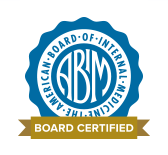Keeping You Informed About the Latest Health News
PATIENTS HANDOUTS ON DIABETES MELLITUS
Diabetes Mellitus, Type 2
Introduction
Background
Type 2 diabetes mellitus is a group of disorders characterized by hyperglycemia and associated with microvascular (ie, retinal, renal, possibly neuropathic), macrovascular (ie, coronary, peripheral vascular), and neuropathic (ie, autonomic, peripheral) complications. Unlike patients with type 1 diabetes mellitus, patients with type 2 are not absolutely dependent upon insulin for life, even though many of them are ultimately treated with insulin.
Pathophysiology
Hyperglycemia results from lack of endogenous insulin, which is either absolute, as in type 1 diabetes mellitus, or relative, as in type 2 diabetes mellitus. Relative insulin deficiency usually occurs because of resistance to the actions of insulin in muscle, fat, and the liver and an inadequate response by the pancreatic beta



Diet
For most patients, the best diet is one consisting of the foods that they are currently eating.
Activity
Most patients with type 2 diabetes mellitus can benefit from increased activity. Aerobic exercise improves insulin sensitivity and may improve glycemia markedly in some patients.
Medication
Pharmacologic therapy has changed dramatically in the last 10 years. New drug classes and new drugs effectively treat type 2 diabetes mellitus, allowing glycemic control previously beyond the reach of medical therapy.
Traditionally, diet modification has been the cornerstone of diabetes management.
Weight loss is more likely to control glycemia in patients with recent onset of the disease than in patients who are significantly insulinopenic.
Complications
Coronary heart disease, Retinopathy, Neuropathy
Gastroparesis is usually less of a problem in patients with type 2 diabetes mellitus than in those with type 1. Patients with cystopathy may benefit from cholinergic agents.
Erectile dysfunction is often neuropathic and vasculogenic.
Nephropathy , Peripheral vascular disease,
Prognosis
- Cardiovascular disease is the major source of mortality in patients with type 2 diabetes mellitus.
- Recent studies suggest that broad-based focus in treatment (eg, glycemia, nutrition, exercise, lipids, hypertension, and smoking cessation) is much more likely to reduce the burden of excess microvascular and macrovascular events.

